When many European supercars are displayed in a very high-profile manner, only one supercar brand stands at the top of the sports car industry and is close to the people, and it is the Prancing Horse from Stuttgart-Porsche. Porsche is not only a world-famous car brand, but also represents the culture of the world’s super sports car. Its production of the Porsche 911 is the best-selling car in the world so far. Porsche regards every idea as an opportunity. In order to pursue perfect performance, it can make bold innovation at the technical level, but in any case, Porsche always adheres to its own unique design concept. It is this essence that makes Porsche continue to be proud and guide Porsche to adhere to its own style so far. This is also the core of Porsche brand: a standard that strives for perfection.

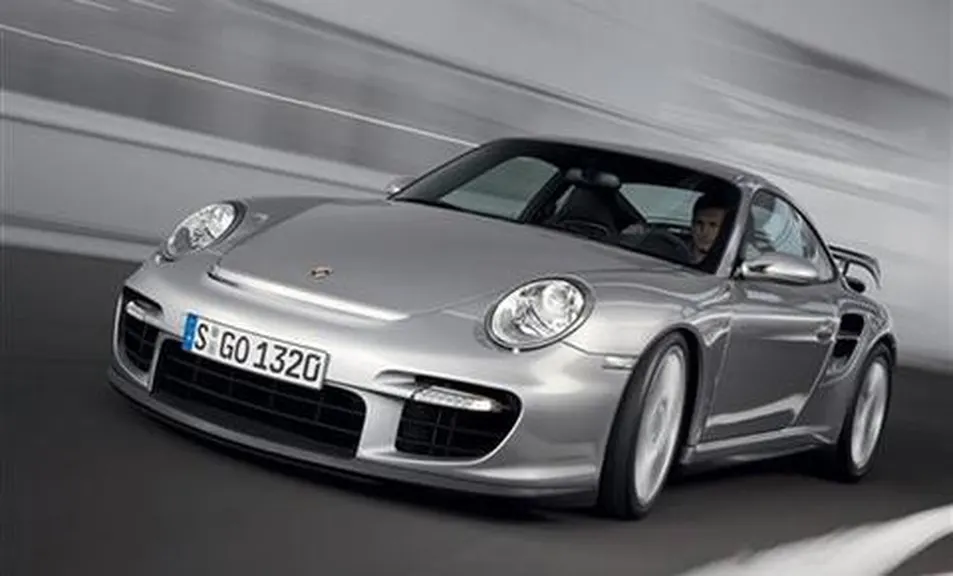
Porsche’s English logo uses the surname of Ferdinand Porsche, the founder of Porsche Company in Germany. The pictorial logo is the shield shaped city emblem of Stuttgart, where the company is located. “Stuttgart” in the trademark indicates that the company is headquartered in Stuttgart; the Prancing Horse in the center symbolizes the amazing explosive power of Porsche sports car; the antlers on the top left and bottom right indicate that Stuttgart was a good place for hunting; the yellow stripes on the top right and bottom left represent mature wheat, which means that the grain is plentiful, the black represents fertile land, and the red represents people’s wisdom and love for nature. All of these constitute a beautiful rural landscape painting, symbolizing Porsche’s glorious past and bright future.


Ferdinand Porsche, the founder of Porsche, was born in Austria in 1875. After finishing his studies at the local grammar school and Reichenberg state vocational school in 1889, he entered his father’s company and became a plumber.
Ferdinand Porsche can be said to be a genius. At the age of 24 (1899), he had invented the electric wheel set motor. In 1900, the Lohner-Porsche (Ronald / Porsche) electric car on display at the Paris auto show. The axle motors of the car were designed by Ferdinand Porsche, which made Porsche famous all over the world. Ferdinand Porsche, then 25, was hired as a designer at Lohner, where he has shown outstanding talent.


In 1906, Ferdinand Porsche transferred to the Austrian branch of Daimler (Daimler) as technical director, and in 1923 he was promoted to chief engineer of Daimler general plant. In 1926, Daimler and Benz car factory merged into the current Benz car factory. In 1928, Ferdinand Porsche, who was also the technical director and board member of Daimler, invented the legendary Mercedes SS and SSK supercharged sports car. But in the meantime, Ferdinand Porsche’s proposal to Mercedes Benz to “produce civilian cars” was vetoed by the board of directors at that time, which finally let him leave the company. In 1992, Porsche and Mercedes-Benz had a short-term cooperation. This time they launched a high-performance four-door car 500e based on the fifth generation E-class car 300E. This car can be said to be the ancestor of all four-door cars. It is equipped with a 5.0-liter V8 engine, with a maximum output power of 322 horsepower and a torque of 480 nm. At that time, it was a string of incredible data. At the same time, it was equipped with a 4-speed automatic gearbox, with 0-100 acceleration of 6.1 seconds.


On March 6, 1931, with the help of several investors, Ferdinand Porsche established a design company in Stuttgart, which specializes in the development of engines for cars, airplanes and ships. This is the predecessor of today’s Porsche AG. Since then, Porsche has started to develop “Volkswagen”. In 1935, the prototype car was born, which is the “beetle” of Volkswagen.
In 1938, under the guidance of Ferdinand Porsche, the first factory for Volkswagen was officially established. The Beatles have been in production for more than 50 years and are the largest production car model in the world. In the 1930s, Ferdinand Porsche also designed 3 high-performance racing cars for the predecessor of Audi, AutoUnion, which are also considered to be the predecessors of Porsche sports cars.


Little known is that this highly respected doctor, in addition to founding the now well-known Porsche Motors, assisted the strongest people in German history to design and develop the famous national car, the Beatles. During World War II, he also designed Tiger Tanks for Hitler in the European battlefield. Because of his relationship with the German Nazis, he was arrested by the Americans after the end of World War II, and later handed over to France. He spent two years in prison and was released in August 1947.
In 1946, after the end of World War II, Porsche’s design company moved to Austria, and Ferdinand’s son, Ferry Porsche, and his sister, Louise Piech, formally joined the management team. In 1948, under the leadership of Ferri Porsche, a 356 sports car based on Volkswagen parts was born, which is the first sports car named after Porsche with a chassis made of light metal. The 356 has a lightweight body, low drag coefficient, flexible handling performance and air-cooled engine, and the engine adopts the Porsche classic rear-drive arrangement, which makes it unique. But when the body of the 356 was first designed by Porsche engineers, its parts, including the engine, suspension system and chassis, were almost borrowed from Volkswagen. The early 356 prototype car was made of aluminum, but the cost proved that the application of aluminum in mass production vehicles is very impractical, so later, the 356 body was made of steel instead. 356’s aerodynamic handling and excellent assembly quality had a good reputation between fans on both sides of the Atlantic in the early 1950’s, so at that time, 356 was often seen on the street or in the racetrack.




In 1950, Porsche moved back to Stuttgart, and then built a workshop with the rented body manufacturing plant, making Porsche an independent car manufacturer. Ferdinand Porsche died in 1951 after fulfilling his dream of building his own sports car.
With the establishment of Porsche automobile factory, 356 has gradually changed to independent production. Then 356 has experienced several generations of evolution, including 356, 356A, 356B, 356C and 356 Speedster, Coupes, Cabriolets and other convertible models, becoming one of the best-selling brands in the western countries in the 1950s and 1960s. The last modified version of the 356 was the 356C in 1964, which used dishbrake and the most powerful engine on Porsche’s production line at that time. It was called 95 “SC” because of its 95 horsepower. By 1965, the production of 356 series had reached 77361.
At the same time, the most representative Porsche classic sports car is 550 Spyder. The research and development plan of the Porsche 550 Spyder started in 1953. Following the excellent foundation of the first and only Porsche 356 at that time, Wilhelm Hild, a Porsche designer, adopts a tubular frame chassis structure (later 550A is replaced by a more advanced cage chassis), a center rear-drive design, and the power comes from a 1.5L air-cooled all aluminum horizontal opposed 4-cylinder engine. This Porsche Design for No.550 and the name of the 550 Spyder comes from that. The 550 Spyder has brought endless glory to the Porsche family. It is reported that the current Porsche Boxster series has evolved from 550 Spyder (it is also reported that the new entry-level open top race based on the Volkswagen bluesport platform to be produced in 2013 will become the successor of 550 Spyder).


The lightweight design of the 550kg makes it a natural winner in various tournaments and popular. Porsche’s first two version of 550 both had a “Porsche 356” chassis design, but this situation did not last long. In the summer of 1953, the new car used Dr. Fuhrmann’s original four-axle, 1.5-liter engine for testing and gaining an additional 110 horsepower. In fact, its outstanding power design was still working for Porsche’s proud achievements until 1960s. And Hans Herrmann’s hard work in the Pan American “Carrera” cross-country race held in Mexico in 1954 has had an important influence up to now: the success of the race makes all the car models with Fuhrmann power design all named “Carrera” to highlight the success of this competition. As a result, in the future, all the Porsche 356 models will be able to put the “Carrera” mark on the engine hood. At the beginning of the “911” in 1972, Porsche named the new car “Porsche 911”. Today, as a new generation of high-performance car, the Carrera GT still inherits the body design of the Porsche lightweight sports car.


The 804 F1 launched in 1962 is the first F1 racing car of Porsche, and it is also the first Porsche model to adopt the horizontal opposed eight-cylinder engine. It still adopts an overhead dual camshaft with two valves mechanism each cylinder, the exhaust volume is still 1.5L, and the fuel supply system adopts four sets of double Weber 38 DCNL4 (eight throat direct injection carburetor) has a maximum power output of 184 horsepower at 9300 rpm and is equipped with a six speed manual transmission for the first time. The all aluminum body makes the vehicle weight as low as 452kg, the horsepower weight ratio is 0.41, and the speed is as high as 270km / h.


The 904 GTS was launched in 1963. Its main purpose is still racing car. It is still designed by Ferri Porsche. The new 587 / 3 2.0L horizontally opposed four cylinder engine is still designed with 2 valves per cylinder of overhead double camshaft. The oil supply system is two sets of double Weber carburetors. The maximum power output reaches 180 horsepower at 7000 rpm. The gear and rack steering gear provided by ZF is installed for the first time. The front and rear disc brakes make the reliability greatly increased, and a manual five front speed gearbox is equipped. The frame welded by steel pipe and equipped with fiberglass body make the 904 GTS weigh only 650 kg, the acceleration time of 0-100 km / h is only 5.3 seconds, and the top speed can reach 257 km / h.


In 1961, Porsche began to develop a six-cylinder engine. The body design was carried out by Alexander Porsche, the son of Ferry Porsche. At the 1963 Frankfurt International Auto Show, Porsche launched 911, the successor of 356 (the original name was 901, because Peugeot Motor Company of France was registered 901 at that time, so the smaller Porsche had to be renamed 911 at that time). The basic idea of installing a horizontally opposed air-cooled engine in the rear has been preserved in the 911 model, and its charm has not been reduced to nowadays. The 911 replaced the previous 4-cylinder engine, and for the first time installed a 6-cylinder boxer engine in the rear of the car, which has not changed to this day. Compared with today’s models, the 911 at that time had only 130 horsepower, but it could still accelerate from 0 to 100 km / h in 9.1 seconds, and the top speed reached 210 km / h. In 1964, Porsche 911 began production. In order to maintain and improve the quality of Porsche, in 1971, Porsche built a modern research and development center and a large test site in Weissach, near the general factory.


In 1966, the Porsche 906E, equipped with a 2.0-litre horizontally opposed six-cylinder modified 901 / 21 engine from the 911 S, was born. It adopted the aluminum magnesium alloy cylinder block technology with a compression ratio of 10.3:1 at that time. It retained the top single camshaft 2-valve valve distribution mechanism. It also adopted Bosch’s mechanical fuel injection system for the first time. It still uses air-cooled cooling system. The steering and transmission systems are from 904 GTS. The maximum power output reaches 220 horsepower at 8100 rpm. The steel tube welded frame adopts a special plastic body, with a weight of 635 kg and a top speed of 280 km / h. The overall performance is quite amazing.


In 1968, the first horizontal eight-cylinder racing car 908K for Le Mans competition was born, and the rational driving form of center rear drive was retained. The new 3.0L horizontally opposed 8-cylinder engine is still air-cooled cooling system. It adopts the overhead single camshaft 2-valve valve distribution mechanism. The oil supply system is still in the charge of Bosch mechanical fuel injection system. The maximum power output reaches 350 horsepower at 8500 rpm. The suspension system is of front double rocker arm and rear unequal rocker arm structure, and adopts the front and rear disc brake system jointly developed by rack and pinion steering gear and Dunlop-ATE. The all aluminum tubular frame is equipped with fiberglass body, with a weight of 600 kg. The 908K was produced a total of 32 units.

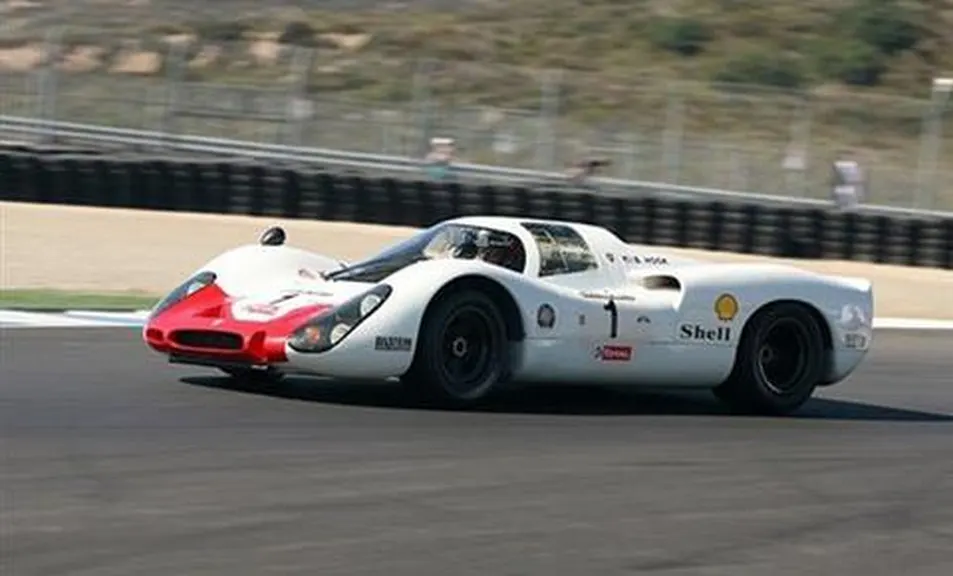
Despite the popularity of the 911 series after its launch, the 356, which has been cooperated with Volkswagen, is a classic masterpiece. However, in the era of economic depression, the high price of 911 has become too high to bear, while the 356 is gradually out of touch with the times. Therefore, Porsche has put its idea on the best partner-Volkswagen. Therefore, in the 1969 Frankfurt Motor Show, Porsche launched a model designed and assembled by Porsche but the mechanical structure is all from Volkswagen called 914. The 914 is designed with a central rear drive. At the beginning of power, there was only a 1.7-liter air-cooled horizontal opposed four cylinder engine made by Volkswagen. Later, the 2.2-liter and 2.0-liter horizontal opposed engines developed by Porsche were added. Porsche has high hopes for the 914, but it was hit hard when it came to the U.S market, so it ended its short six-year life cycle in 1975.

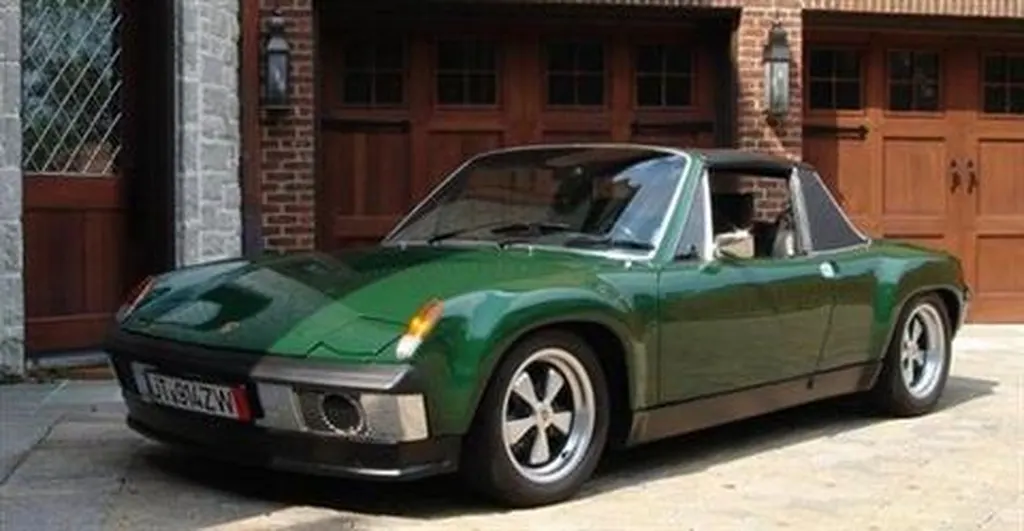
In 1970, the Porsche 917 made its debut in Geneva. It was equipped with a 4.5-litre horizontally opposed 12 cylinder air-cooled aluminum magnesium alloy cylinder engine for the first time. It was designed with two valves on the top double camshaft. The compression ratio was 10.5:1. The fuel supply system was Bosch mechanical fuel injection system. The maximum power output reaches 580 horsepower at 8400 rpm. For the first time, aluminum alloy tubular frame and polyester fiber body are used, with the vehicle weight of 775 kg. The suspension structure is front and rear unequal length rocker arms, the shock absorber is provided by Bilstein, the brake system has been upgraded to front and rear inner ventilation discs, and the gearbox has been reduced to four front speeds. It has won many world championships and is a legendary racing car in the history of Porsche.

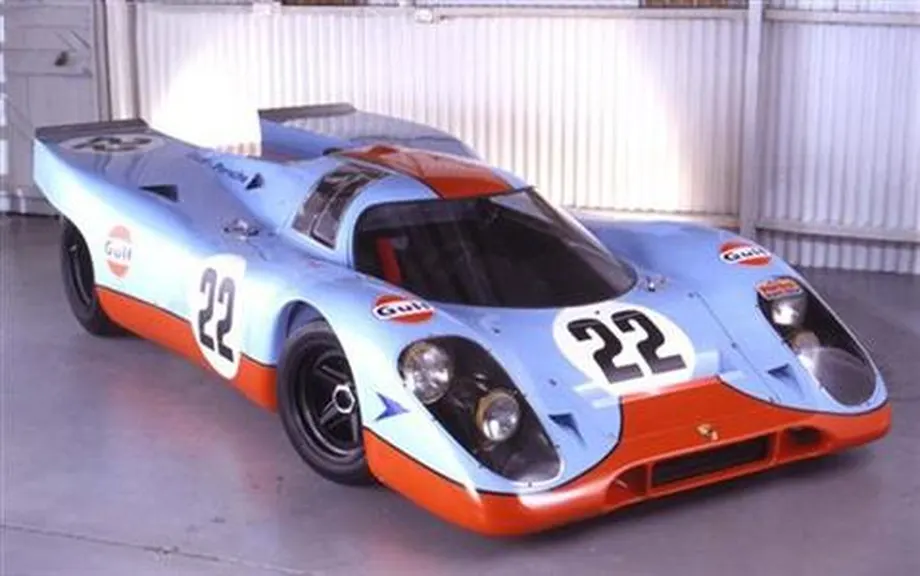
From 1972 to 1989, the 911 belonged to the G-Series, and importantly, the name “Carrera” also appeared for the first time. In order to participate in low-level events, Porsche launched the 911 Carrera RS in 1972, which combines street and primary events, at the request of many supporters. Equipped with a unique 2.7L all aluminum magnesium alloy horizontal opposed six cylinder naturally aspirated engine, with a cylinder diameter of 90mm, stroke of 70.4mm, and compression ratio of only 8.5:1, it is still a simple overhead double camshaft design with two valves per cylinder. The maximum power output reaches 210 horsepower at 6300 rpm. The driving mode naturally returns to the rear drive. It is equipped with front and rear ventilation brake system, gear, rack steering gear and five front speed manual transmission. A total of 1590 cars have been produced in the 911 Carrera RS, which has become a very rare priceless collection model of Porsche and the ancestor of the 911 GT3 in the future.


In 1974, the birth of the 911 Turbo (Model 930) opened a new era in Porsche history. It is an exhaust-supercharged car. Porsche is the first manufacturer to apply electroplated body to a series of models. Although the 911 Turbo is also improved based on Carrera, it has changed a lot. In terms of power, since Turbo adds turbocharging on the basis of Carrera engine, the power performance is greatly improved.


In 1975, Porsche introduced the 924, the first front-engine and rear-drive sports car. The 924 was originally a car that Porsche designed for Volkswagen. The design principle was mainly to maintain commonality with Volkswagen car components. This car’s product type in Volkswagen is 477 and the number is EA435. However, Volkswagen abandoned its production plan for financial reasons, and Porsche paid back $ 60 million for ownership of the design and began production of the 924. Since then, it has continued to launch enhanced versions of the 924 Turbo (931) and the 924 Carrera GT (937), with the Carrera GTS and GTR finally released. These two cars were developed from the 937 Carrera GT and did not have a clear company number, so they were also classified as the 937 series.

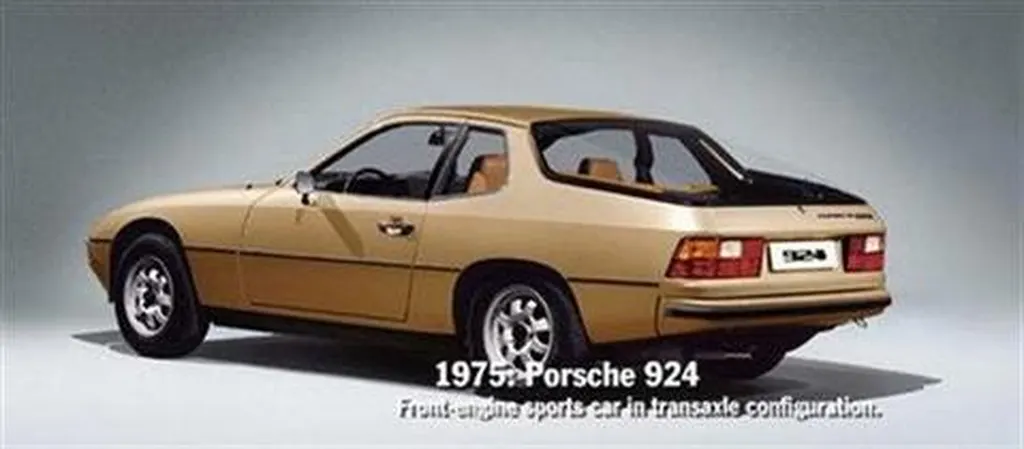
The 928 has been designed since 1971, and the company intends to use it as an alternative to the 911. However, due to the oil crisis, the 928 product was delayed until 1978. For the same reason, the 928 uses a front V8 engine and a water-cooling system. The car is equipped with a 4.5-litre engine. The car became the first sports car to win the “model of the year” in 1978. Although the 928 is well received in the professional field, it is not the case for consumers, who believe in 911. So Porsche engineers quickly focused on the improvement of traditional models.


In 1982, Porsche introduced the new 956 in order to participate in the new rules of the Le Mans 24 Hours. The 956 weighs only 840 kg and has a top speed of 355 km / h. A total of 27 vehicles were produced, which were successively obtained in 1982, 1983, 1984, 1985 Le Mans 24 Hours Endurance Championship. In 1983, the display of the “Group B” technology research results at the Frankfurt International Auto Show led to the development of the four-wheel-drive 959 model, which has since been produced in limited production. In 1986, it became the first sports car to win the Paris-Dakar Cross Country. This exciting model is one of the most controversial idols in the history, and it can be said that Porsche has demonstrated the highest level of automotive production technology in the 1980s.



In 1989, at the celebration of Ferley Porsche’s 80th birthday, the classic 911 Carrera 2 (Model 964) was introduced, which was equipped with a new manual automatic integrated transmission. Starting from the 964 series in 1989, the 911 began to be upgraded and 85% of its components were newly developed. From engines, drives, steering systems, axles, wheels and tires all the way to ventilation and air conditioning. At that time, Porsche was also equipped with ABS and airbags for the first time in batches. The 911 Carrera 4 was also equipped with all-wheel drive. The most powerful representative of the 964 family is the 360-horsepower 911 Turbo.


After 964, “993” appeared on the 911 family tree in 1993. The 993 has noticeably softer body lines, more rounded fenders, slanted oval headlights and a slidable rear tail spoiler, which also widens the rear of the car. In this car, it was finally equipped with an air-cooled 6-cylinder engine with a 3.6-liter displacement and 272 horsepower. The turbocharged model has 408 horsepower.

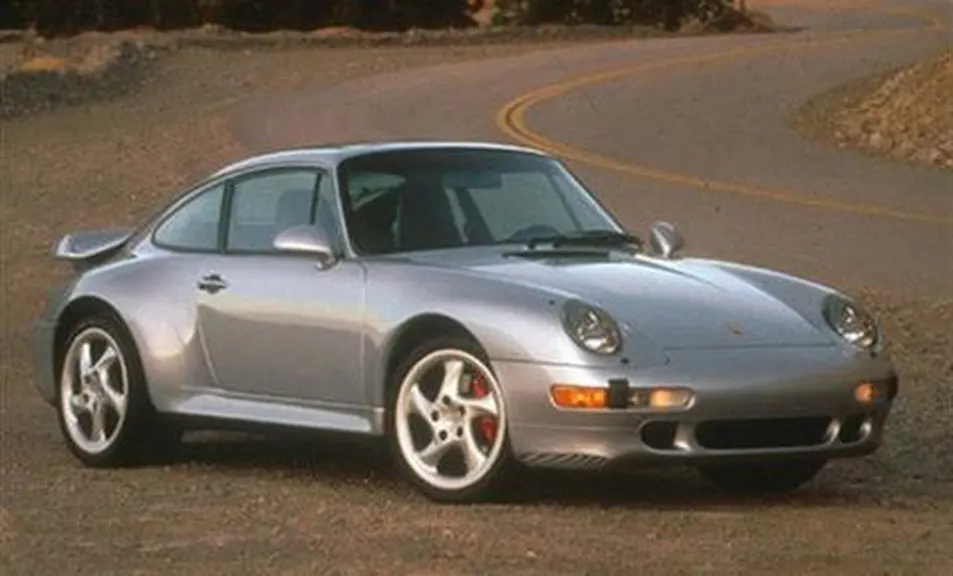
 What excites Porsche fans is that engineers produced the 996 series in 1997. In the 34-year production line of the 911 series, Porsche was first equipped with a water-cooled 6-cylinder engine in batches. This change is mainly to meet future global emission standards. Of course, fans are frustrated because they can no longer hear the saw sound of the typical 911 air-cooled transmission. In compensation, they gained more power. In 1998, the 911 introduced the groundbreaking speed machine GT1. The 1998 version of the Porsche Carrera developed to a 3.4-liter displacement and 300 horsepower. The 6-cylinder model of 2002 reached a displacement of 3.6 liters and the horsepower increased to 320 horsepower. Later added 911 GT3, 381 horsepower, 911 Turbo, 420 horsepower and 911 GT2, 462 horsepower.
What excites Porsche fans is that engineers produced the 996 series in 1997. In the 34-year production line of the 911 series, Porsche was first equipped with a water-cooled 6-cylinder engine in batches. This change is mainly to meet future global emission standards. Of course, fans are frustrated because they can no longer hear the saw sound of the typical 911 air-cooled transmission. In compensation, they gained more power. In 1998, the 911 introduced the groundbreaking speed machine GT1. The 1998 version of the Porsche Carrera developed to a 3.4-liter displacement and 300 horsepower. The 6-cylinder model of 2002 reached a displacement of 3.6 liters and the horsepower increased to 320 horsepower. Later added 911 GT3, 381 horsepower, 911 Turbo, 420 horsepower and 911 GT2, 462 horsepower.


The 2003 Porsche 911 GT3 is powered by a 3.6-litre horizontally opposed 6-cylinder engine that produces 380 horsepower and 386 nm of torque. The average power output per cylinder is 105, which is very impressive. Such an engine can accelerate the new GT3 to 0-100 km in 4.3 seconds, while the maximum speed is over 305 km / h. In order to control this horsepower machine, the transmission of the 911 GT3 has also added transmission oil cooling and lubricating oil injection, as well as other strengthening measures.


The 911 GT2’s engine uses a modified 911 Turbo’s 3.6-litre twin-turbocharged 6-cylinder engine, which produces a surprising 456 horsepower, while the 911 Turbo has 415 horsepower. The 911 Turbo uses a four-wheel drive system, while the GT2 uses rear-wheel drive to reduce vehicle weight, so the reduced weight of nearly 220 pounds can give the GT2 a faster starting speed and top speed. According to the manufacturer, the GT2 accelerates from 0 to 60 miles in 4 seconds and has a top speed of 315 kilometers per hour.


 On September 17, 2004, another exciting time came. Porsche released the 997 series 911. The biggest change in the power of the 997 series is that the Carrera S model uses the 3.8-liter horizontally opposed engine in first time. So far, the 997 series has covered almost all models of the 911.
On September 17, 2004, another exciting time came. Porsche released the 997 series 911. The biggest change in the power of the 997 series is that the Carrera S model uses the 3.8-liter horizontally opposed engine in first time. So far, the 997 series has covered almost all models of the 911.


Although Porsche’s quality is obvious to all, it encountered the worst operating crisis in the plant’s history in the mid-1980s. The car production was cut by half, and then it was stabilized after a sharp reduction in price and a third of layoffs. It was not until 1993 when the Boxster concept car was released that Porsche’s survival was revealed. After this convertible sports car was launched in 1996, it caused a rush of buying around the world. At this point Ferdinand Porsche’s legacy: the introduction of a high-quality, low-priced, popular sports car, finally realized more than 40 years after his death. At the same time, the old-generation air-cooled technology is also fading out of the market, a sign of the new era: liquid cooling technology is fully launched.

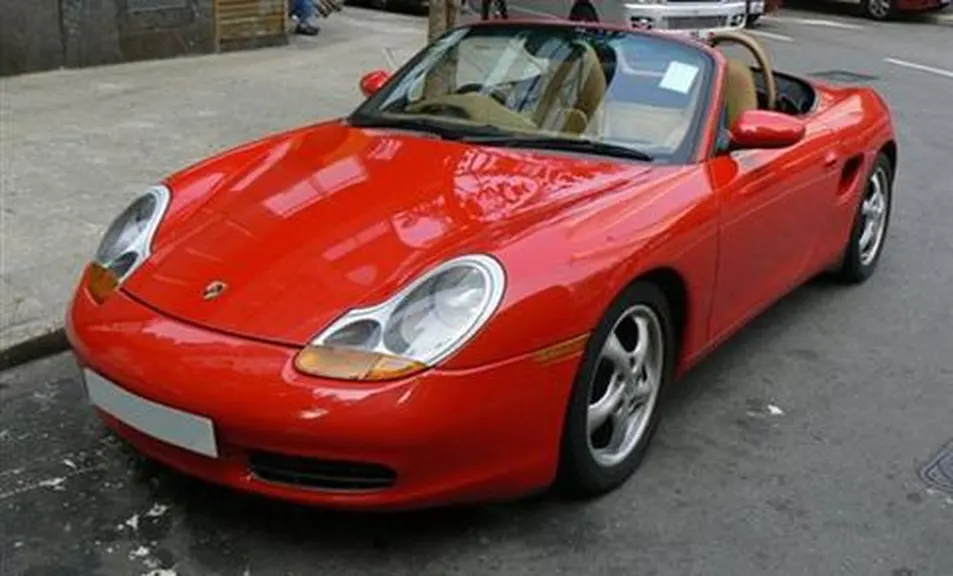
In 2000, the high-performance Porsche Carrera GT sports car was first launched at the Louvre in Paris and became a cross century product. The Carrera GT is a brand new sports car that Porsche is determined to develop based on the civil market. All the mechanical structure, safety and comfort are based on the street car. Many technologies of the whole car are developed with the help of the past experience in racing. As for the goal of the 911 Turbo GT, it is to lead Porsche to the highest level of supercars such as Lamborghini and Ferrari, which is higher than the 911 Tubo.


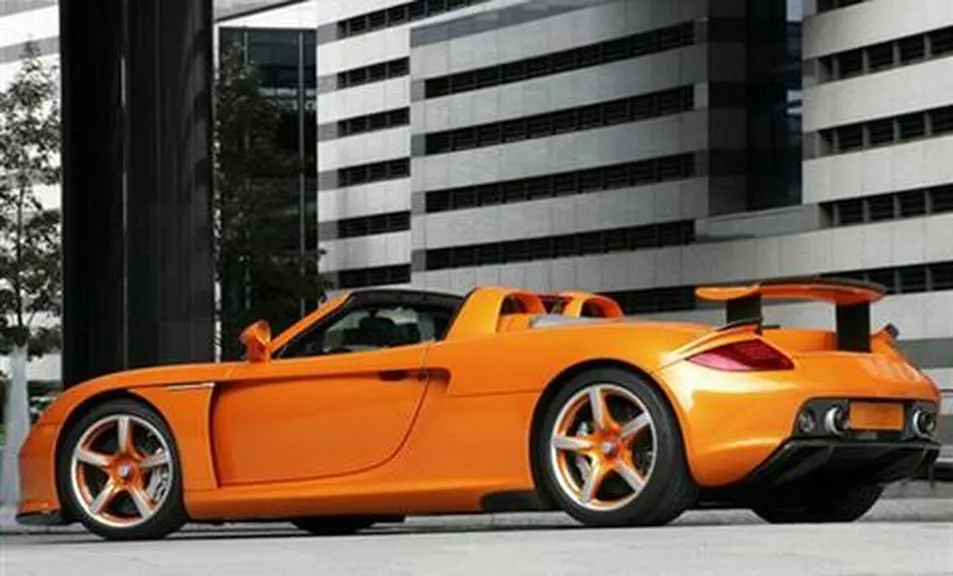 In 1998, Porsche introduced the Cayenne production plan. Cayenne is a brand new model launched by Porsche and a brand new interpretation of Porsche’s racing soul. At the Paris Motor Show in September 2002, Cayenne met the public for the first time. Cayenne’s powerful power comes from the 4.5-liter twin-turbo V8 engine, which uses the patented technology developed by Porsche-VarioCam variable valve opening and closing technology. Strong power with a maximum power of 336 Kw and a maximum torque of 620 Nm. 0-100km / h acceleration time is only 5.6 seconds, and the maximum speed can reach 266km / h.
In 1998, Porsche introduced the Cayenne production plan. Cayenne is a brand new model launched by Porsche and a brand new interpretation of Porsche’s racing soul. At the Paris Motor Show in September 2002, Cayenne met the public for the first time. Cayenne’s powerful power comes from the 4.5-liter twin-turbo V8 engine, which uses the patented technology developed by Porsche-VarioCam variable valve opening and closing technology. Strong power with a maximum power of 336 Kw and a maximum torque of 620 Nm. 0-100km / h acceleration time is only 5.6 seconds, and the maximum speed can reach 266km / h.

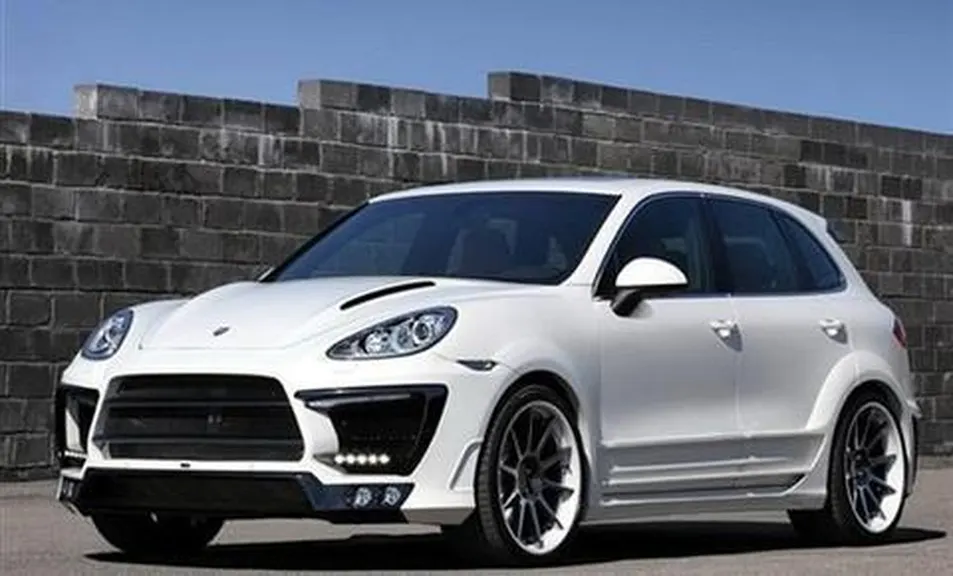
The Porsche Cayman is a new two-seater two-door hardtop sports car with a mid-engine. This model is another masterpiece after the successful launch of the Cayman S in late 2005. Its birth further completes the Porsche sports car family series. Cayman is an entry-level two-door hardtop sports car that has just been introduced to the Chinese market in the summer of 2006. It uses a 2.7-liter horizontally opposed six-cylinder engine and costs only 728,000 yuan. It is the most affordable Porsche sports car other than the Porsche Boxster. In fact, they share the same chassis and power unit. Maybe we can think of Cayman as an upgraded version of the Boxster. Cayman will play a connecting role between the Boxster and the Porsche 911.

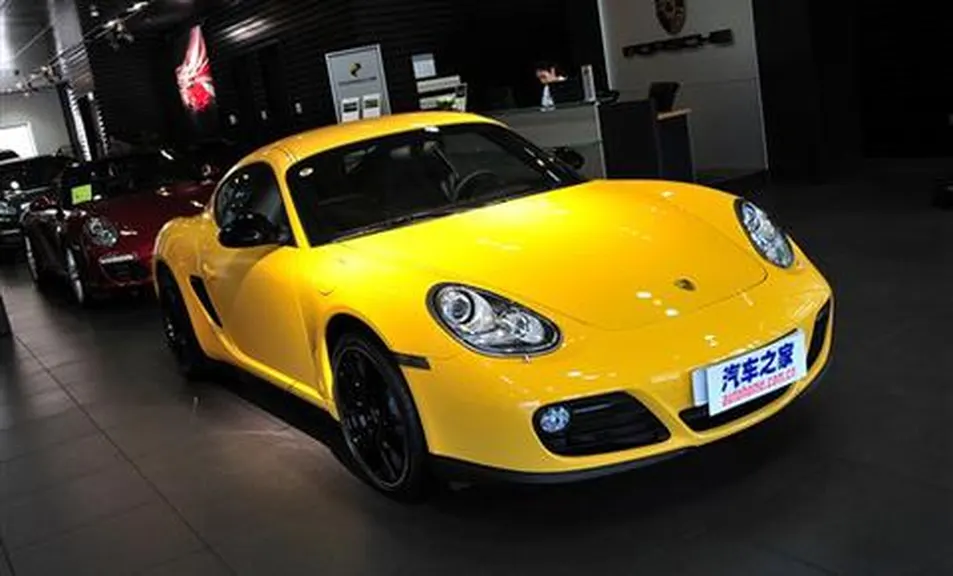
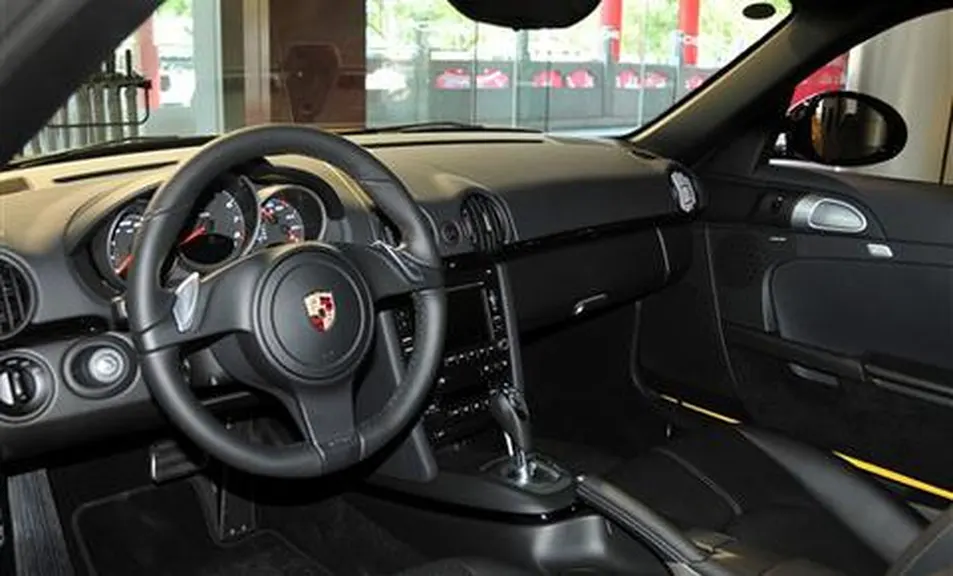 In 2009, the new coupe Panamera launched in the world. The car adopts a four-door design, with a large air inlet on each side of the front face, and a horizontal strip-type fog lamp runs through it with a unique shape. The sideline surface is simple and soft, elegant and dynamic. The huge five-spoke wheel rims are paired with yellow brake calipers, suggesting a good sporting potential. Like other Porsche models, the interior of the new Panamera uses a traditional steel load-bearing body structure.
In 2009, the new coupe Panamera launched in the world. The car adopts a four-door design, with a large air inlet on each side of the front face, and a horizontal strip-type fog lamp runs through it with a unique shape. The sideline surface is simple and soft, elegant and dynamic. The huge five-spoke wheel rims are paired with yellow brake calipers, suggesting a good sporting potential. Like other Porsche models, the interior of the new Panamera uses a traditional steel load-bearing body structure.

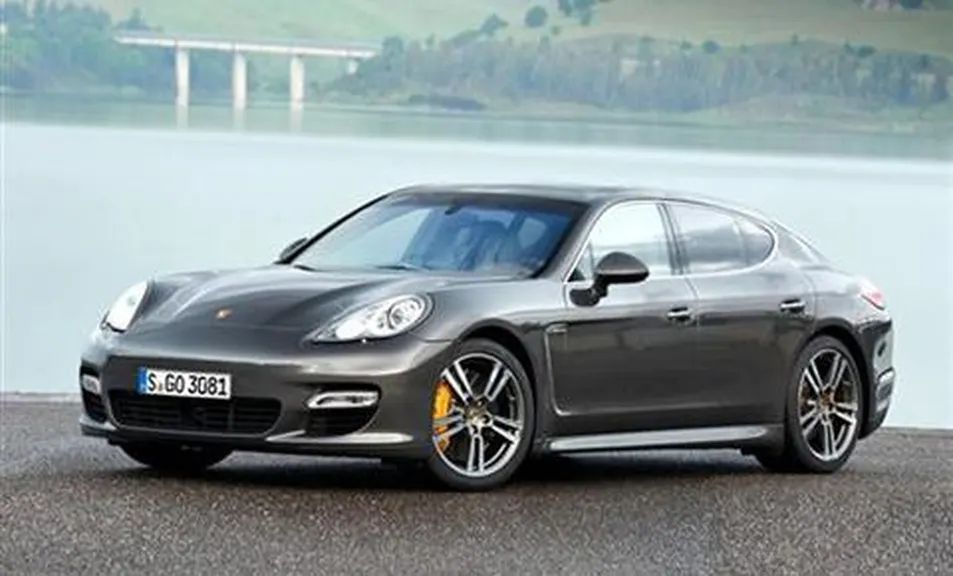
Summary:
That’s right, Porsche is such a brand that adheres to its own ideas and continues to create miracles. Its classic air-cooled horizontally opposed engine and beetle-like shape have been deeply rooted in the hearts of Porsche fans. It is also because of this maverick personality of Porsche
